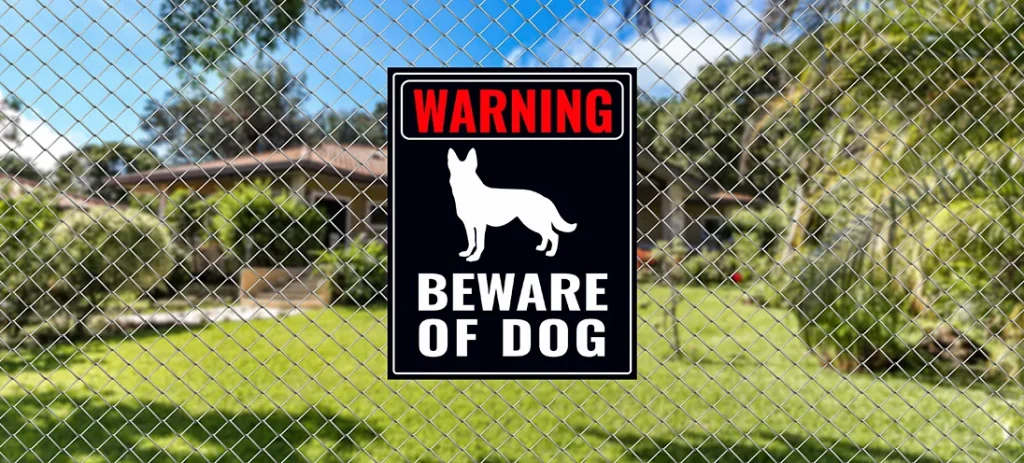
SAFETY TOPICS
Protecting Your Employees from Dog Bites
Dogs, like people, are incredibly diverse, each possessing their own personality. In some cases, they can be protective of their human families, possessions, and territory—which is a natural and instinctual behavior. A dog may also exhibit defensive behavior for other reasons. Factors like stress, fear, injury, or illness—even play—can all be triggers. The best way to avoid an incident is to be proactive. Have guidelines in place for both employees and customers, and train employees on how to handle an encounter with a dog.1

Be proactive and prepared
The rise in home deliveries during the COVID-19 pandemic led to a lasting shift in consumer behavior. As a result, Summit continues to see incidents of dog bites involving delivery and service workers. This issue remains a serious concern for professionals who regularly enter customer homes, including electricians, plumbers, cleaners, and others. To reduce the risk, it’s essential to educate employees and raise awareness among customers and dog owners about safety practices.
A lesson from the postal service
According to the American Veterinary Medical Association, approximately 45 % of households in the United States have at least one canine companion.2 For businesses that provide services at customer homes, it’s crucial that employees are trained to respond if they encounter a dog.
One example is the U.S. Postal Service (USPS), which is no stranger to the issue. The USPS reports that in 2024, more than 6,000 employees were attacked by dogs, which was an increase from the prior year. Not only does the USPS provide training to their employees and place their safety as top priority, but they also educate the public through the USPS National Dog Bite Awareness Campaign.3
Ways to prevent dog bites
- Require that customers place dogs in a closed room or kennel or on a leash. If employees arrive at a residence and this request is not being met, reschedule the service.3
- If your employee is unable to avoid an unrestrained dog:2,3
- Avoid startling the dog. Make your presence known before you enter its territory with a non-threatening noise, such as whistling or honking your horn.
- Keep your eyes on the animal to monitor its behavior. Be aware of the dog and your surroundings. Also try to be aware if there is more than one dog in the vicinity. Pay close attention to the dog’s body language. Some signs of aggression are growling, barking, stiffness, baring teeth, and pulling the ears up and forward. The fur on their back and tail may also stand up or puff out.
- Talk to the dog in a friendly manner. If you know a dog’s name, use it.
- Do not attempt to pet or feed the dog or crouch down to their level. As hard as it may be to resist interaction, it’s safer to keep your distance.
- If a dog becomes aggressive:
- Back away slowly and leave the area.
- Avoid showing your teeth as this could be interpreted by the dog as aggression.
- Use a soft object as a barrier between you and the dog if it attempts to bite.3
- Avoid running, as this may trigger an instinctual response to chase.
- If the dog attempts to bite, use an air horn—or, as a last resort, a humane dog repellent spray. Be sure employees reserve these measures for appropriate circumstances.
What to do if an employee is bitten
Train employees ahead of time on how to react in the event of a dog bite:
- Seek immediate medical attention.
- Call the police or animal control to obtain a report.
- Inform a supervisor, giving the date, time, and location of the incident.
- Take photos of the injury, animal, and property if possible.
- Identify the dog owner if possible.
The most effective way to minimize risk is to educate both employees and customers on protocols that prioritize employee safety while also respecting customers and their pets.
Footnotes
- “Dog Bite Prevention.” ASPCA, American Society for the Prevention of Cruelty to Animals, aspca.org/pet-care/dog-care/dog-bite-prevention (Accessed 8/27/25).
- “U.S. Pet Ownership Statistics.” AVMA, American Veterinary Medical Association, avma.org/resources-tools/reports-statistics/us-pet-ownership-statistics (Accessed 8/27/25).
- “U.S. Postal Service Releases Dog Bite National Rankings.” United States Postal Service, https://about.usps.com/newsroom/national-releases/2025/0529-usps-releases-dog-bite-national-rankings.htm (Accessed 8/27/25).
Disclaimer
The information presented in this publication is intended to provide guidance and is not intended as a legal interpretation of any federal, state or local laws, rules or regulations applicable to your business. The loss prevention information provided is intended only to assist policyholders of Summit managed insurers in the management of potential loss producing conditions involving their premises and/or operations based on generally accepted safe practices. In providing such information, Summit Consulting LLC does not warrant that all potential hazards or conditions have been evaluated or can be controlled. It is not intended as an offer to write insurance for such conditions or exposures. The liability of Summit Consulting LLC and its managed insurers is limited to the terms, limits and conditions of the insurance policies underwritten by any of them.

